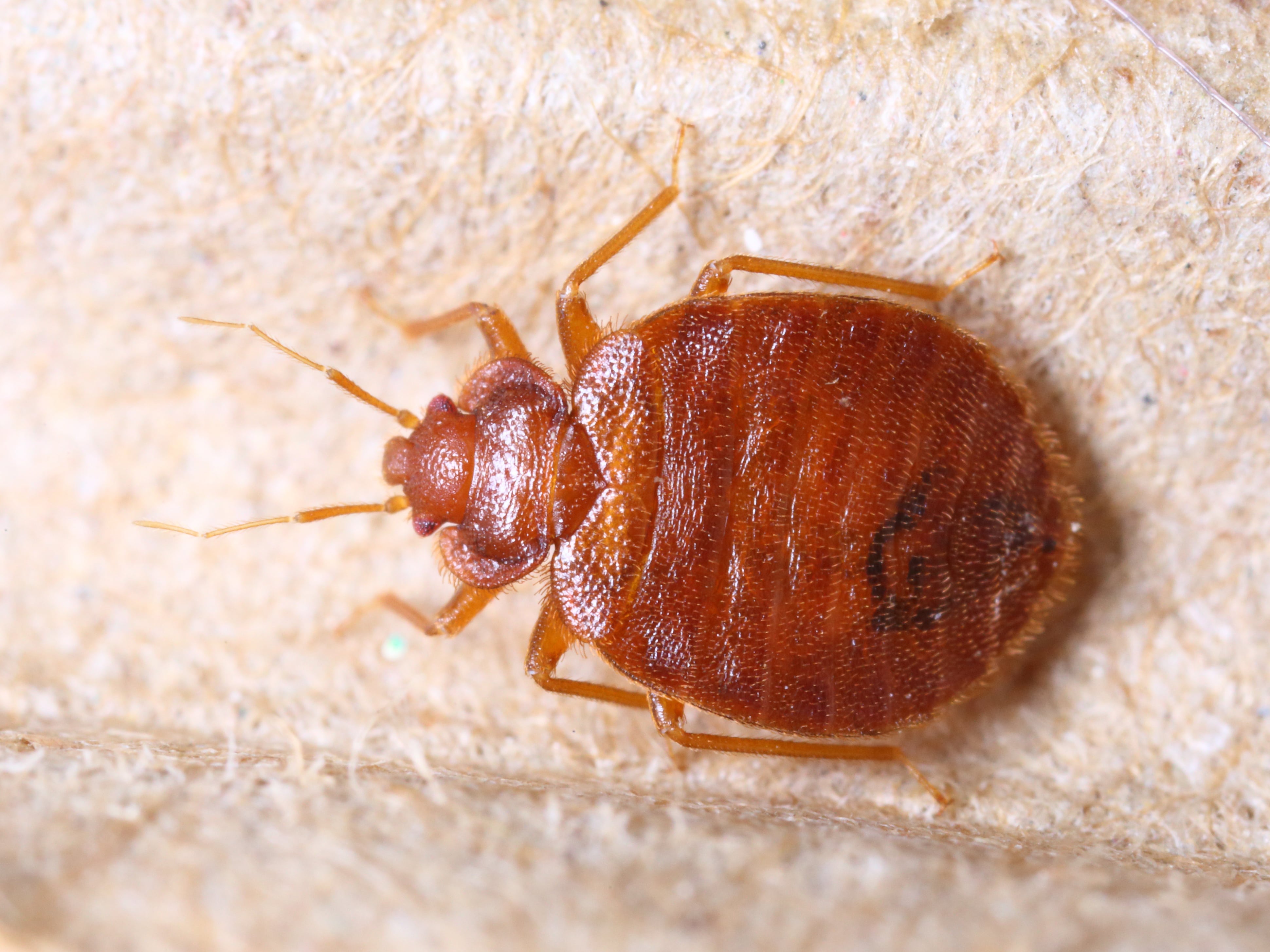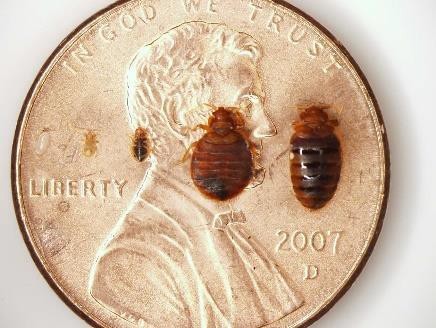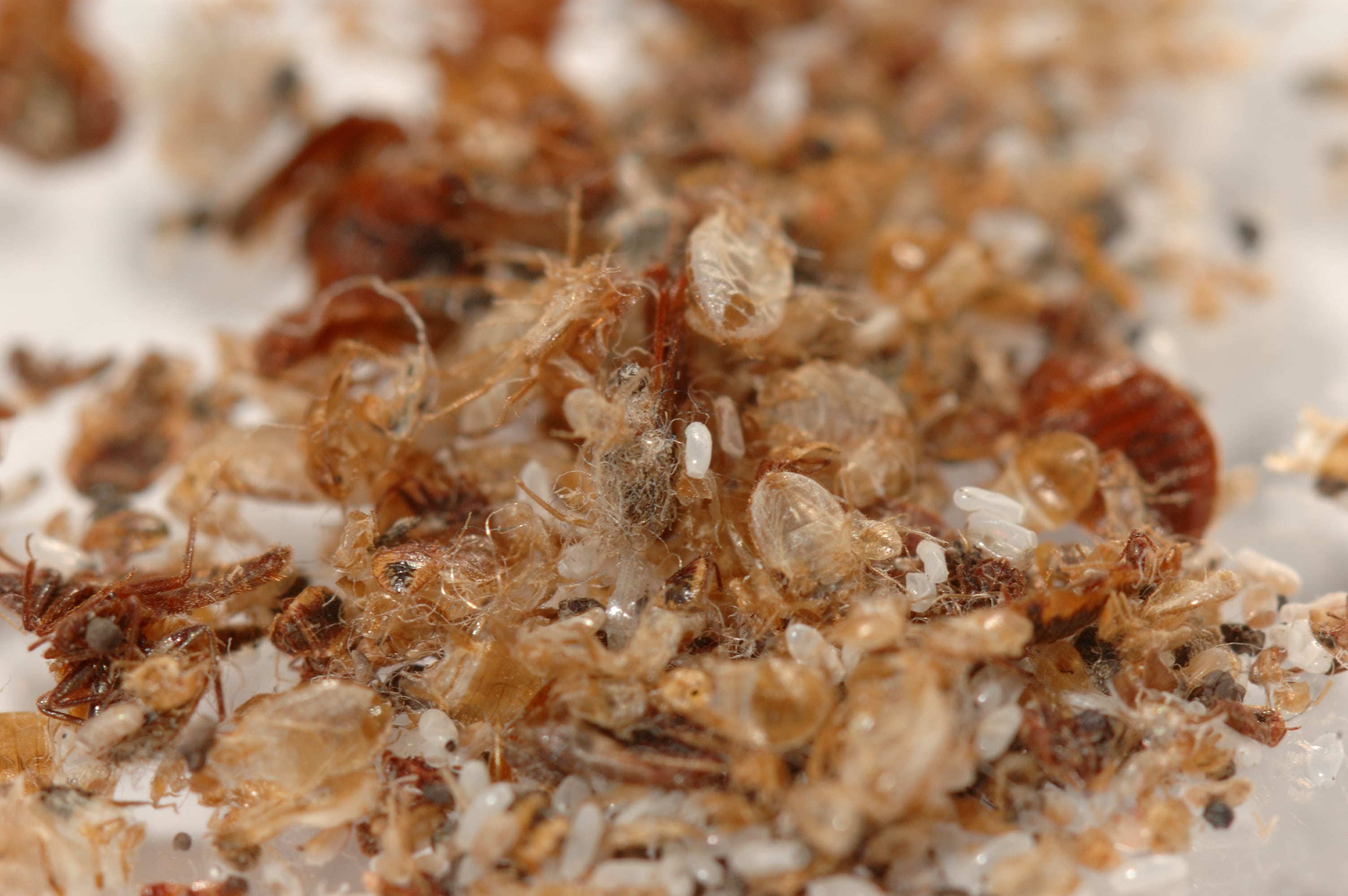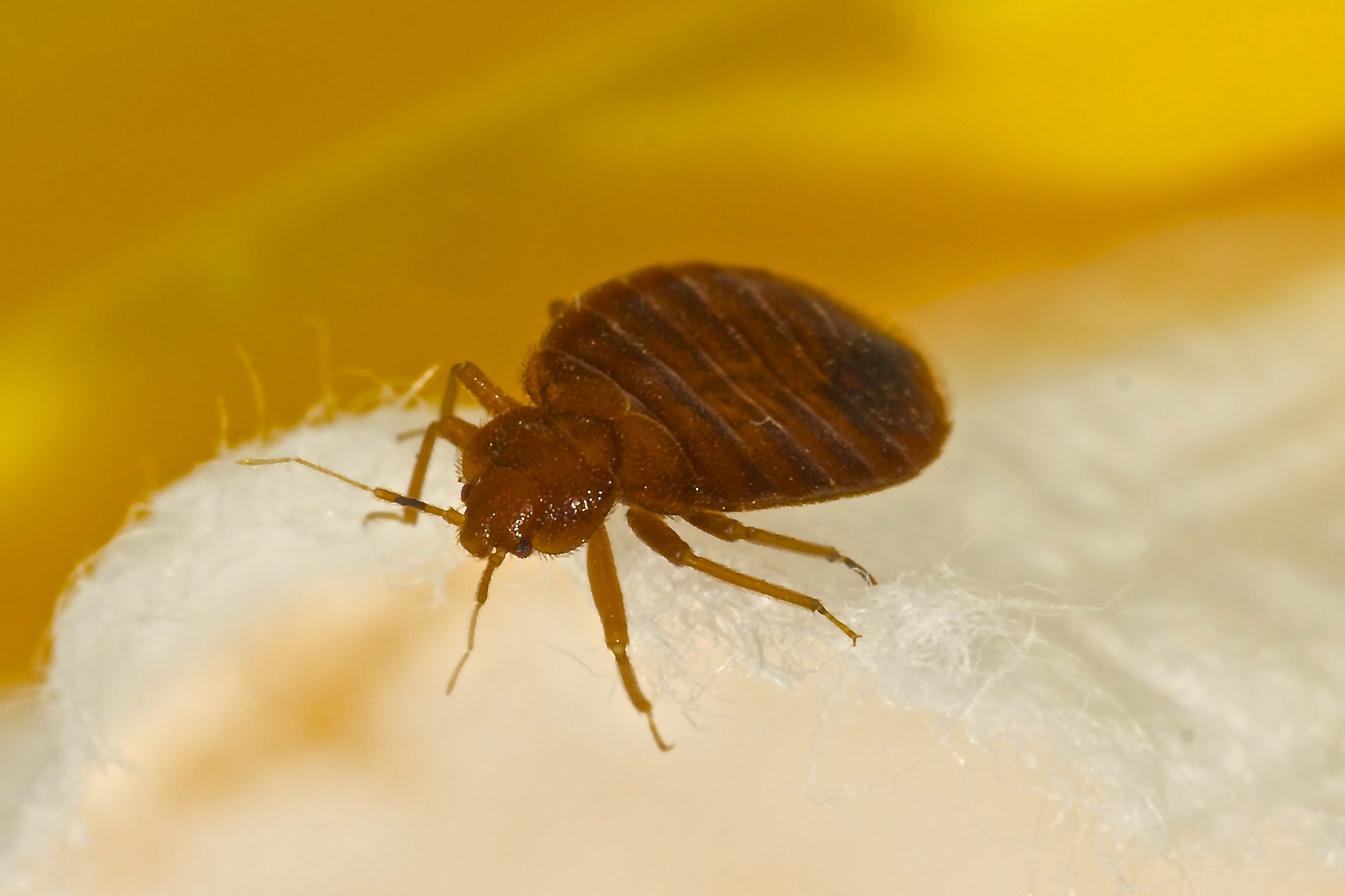The best thing you can do to help protect your family and your home to remain free from Bed Bugs is to simply be aware of their biology, how they travel, where they nest, and the common places they can be found.
Knowing the Bed Bug’s habits gives you the power to stay Bed Bug-Free.

After your service, you will want to spend some time thinking about where your infestation came from. The information below will help you know what to look for and the places you should be looking.

What Do Bed Bugs Look Like?
On the left is a picture of Bed Bugs throughout their different developmental sizes as compared to a penny. There is an egg right above the L in Liberty. As you can see, when they first start out, they are extremely small and easily overlooked.
This is why a professional inspection is always recommended, but even a professional may miss the first stages of a Bed Bug infestation.
What Does a Bed Bug Bite Look Like?
Bed Bugs primarily feed on people. Once a Bed Bug bites a person, that bite will bleed a little bit before the wound closes. This leaves small drops of blood, which after they dry look like reddish brown spots. These “rust spots” are the very first indicator that people will see when a Bed Bug infestation is just starting. You might find them on your sheets, pillow, or nighttime attire.
Bed Bugs must have a blood meal before each stage of growth. Their bites only trigger a reaction in about half of the human population, and those that do react, can react differently. Some get bumps, some get rashes, for some it may be days after the bite before they even show a mark.
And no doctor, entomologist, or pest technician can identify that you have Bed Bugs by simply looking at the bite – it’s not possible.
How Can I Identify Bed Bug Activity?
When you look for Bed Bugs, you have to look for their evidence, like in the picture below. The white ovals are eggs, the black dots are feces, the light tan bugs are skin molts from growing, and then there are the Bed Bugs themselves. Typically, you will first find this kind of evidence on your bed’s box spring, mattress, headboard, or foot boards.

Using white or light-colored linens and white night time attire will help these spots stand out for easy identification; however, the presence of these spots does not automatically mean you have Bed Bugs. It is a great indicator that you should take a close look at your mattress, box spring, headboard and foot board. When an infestation is first starting they are going to nest within a couple feet of their food source.
Where Do Bed Bugs Come From?
It’s vital to understand how Bed Bugs can come into your home. Most people believe the most common place a person can get Bed Bugs is from a hotel/motel while they travel. Bed Bugs are excellent hitch-hikers, and can easily hide away on your clothes and luggage.
However, the most common source of a Bed Bug infestation is used furniture. Always perform a detailed inspection on any new or secondhand furniture before you bring it home.
Be particularly careful when getting furniture and items from places like:
- Garage sales
- Roadside salvage
- Thrift shops
- Donations
- Free giveaways
It is still a good idea to also inspect hotels/motels that you are using. Pull back the mattress and linens. Check the headboard and night stand. Look into the deep cracks and crevices where Bed Bugs like to hide. Bringing a flashlight will make this easier. A quick check of these hot spots will greatly reduce your chances of unknowingly encountering Bed Bugs. It is also a good practice to leave your suitcase in the bathtub when not in use.
The tubs sides are too slippery for the Bed Bugs to climb up. Another good tip is to stay at establishments that use light-colored/white linens.
There are some places that have a more than average chance of being infested with Bed Bugs, including:
- Shelters
- Retirement homes
- Poorly-managed hotels/motels
There are also some places you might not think would have Bed Bugs, such as:
- Theaters
- Restaurants
- Offices
- Planes/trains/automobiles
The Bed Bug has fed off of humanity for thousands of years. Wherever we frequent, you may find them. The key is to be aware of your surroundings. Take a look around where you plan to sit or sleep. Use the light on your phone and take a quick look at the cracks and crevices on that theater seat, restaurant booth, public transit seat, or hotel bed. The earlier you find them, the easier they are to avoid and to eliminate.

